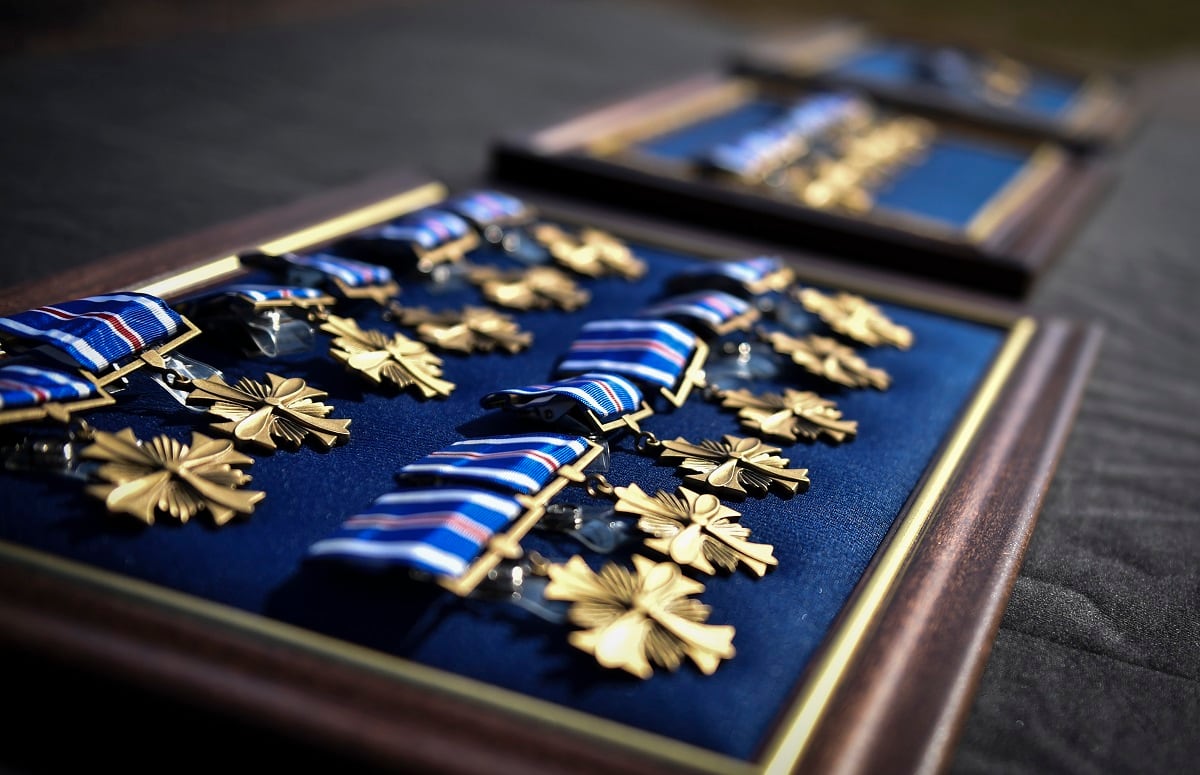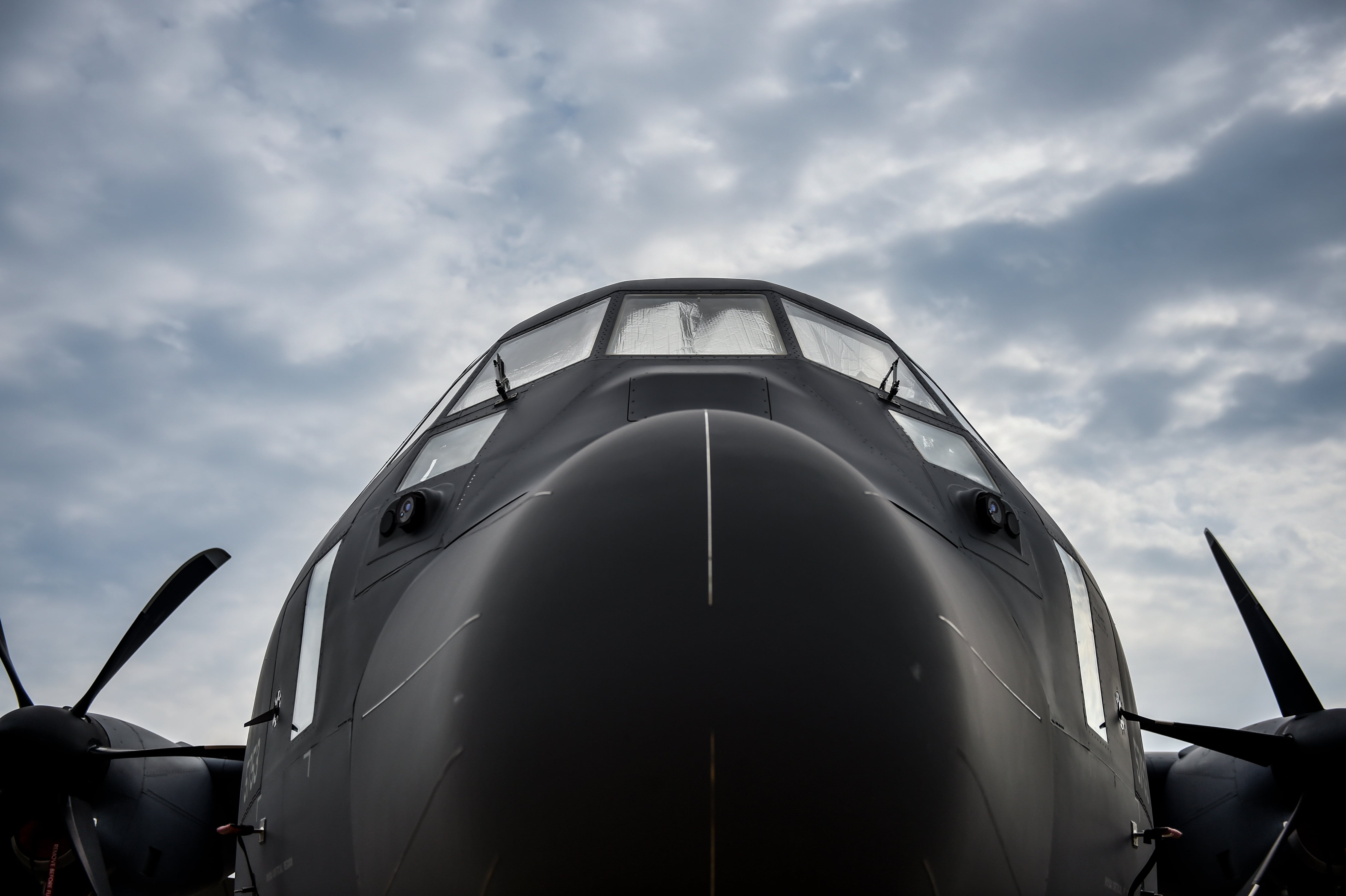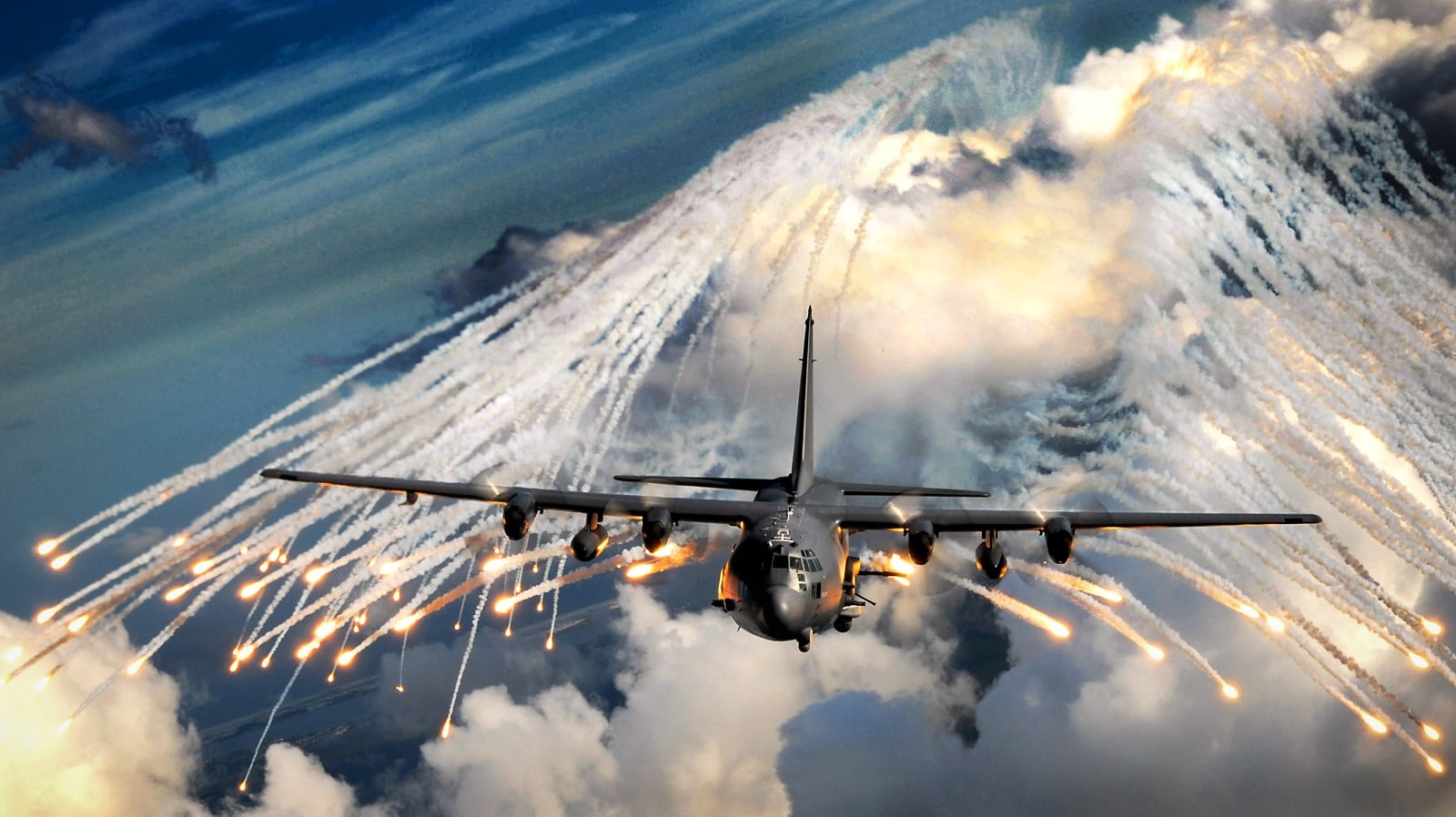Two dozen AC-130U crew members from Air Force Special Operations Command received Distinguished Flying Crosses Friday for heroism during four separate missions in Afghanistan.
The Spooky crews, all from the 4th Expeditionary Special Operations Squadron, were honored for missions spanning from July 2016 to May 2017, AFSOC said in a Friday release.
“These are the stories of legend and lore told around the squadron,” AFSOC commander Lt. Gen. Brad Webb said during the ceremony at Hurlburt Field, Florida. “The men and women of this command live our ethos every day.”
July 25, 2016
Four members of a Spooky crew ― fire control officer Maj. Philip Garito, aircraft commander Capt. Jonathan Rodgers, special missions aviator Technical Sgt. Benjamin Narro, and special missions aviator Staff Sgt. Dale Trant ― received the DFC for a mission providing armed overwatch for 114 American and Afghan special operations troops during a “high-risk, daylight, armed assault in Nangahar Province, Afghanistan,” according to the citation released by AFSOC.
The troops pushed into a valley when more than 50 insurgents ambushed them, firing from multiple fortified positions on higher terrain and in buildings that surrounded the Americans and Afghan soldiers.
The AC-130 crew came to their rescue, firing round after round from the 25mm, 40mm and 105mm, while coordinating Hellfire missile strikes, bomb runs and other attacks from nearby helicopters and fixed-wing aircraft, the citation said. The Spooky crew at times fired the 105mm at “danger close” range ― within 120 meters ― and kept firing on the enemy headquarters.
At the same time, the AC crew had to work around multiple malfunctions in their 105mm and 40mm cannons, while defending the exposed friendly forces. This gunship began running low on fuel and ammunition, so it coordinated the launch of another gunship to allow them to refuel and rearm.
But when that new gunship arrived, the insurgents renewed their attack. So the two AC-130s teamed up in a gunship formation and the two planes began firing four guns simultaneously to beat back the insurgents with continuous fire.
In all, this crew flew 12.3 hours, the citation said, and no friendly forces were lost, while 31 insurgents were killed.

March 29, 2017
The second set of DFCs were awarded to six airmen ― aircraft commander Lt. Col. Grant Sharpe, fire control officer Maj. Frederick Robertson, navigator Capt. Jeremy Mooney, special missions aviator Tech. Sgt. Austin Parrent, sensor operator Tech. Sgt. Erik Petersen, and sensor operator Staff Sgt. Andrew Portz ― who provided close air support for 35 American and Afghan special operations forces during a daylight reconnaissance mission in Kot Valley, near Nangahar, the citation read.
The friendly forces on the ground finished their mission and were preparing to return to their outpost, when they were ambushed and pinned behind enemy lines by more than 65 heavily armed and concealed Islamic State fighters. The ISIS fighters were armed with small arms, heavy machine guns, rocket-propelled grenades, suicide vests and improvised explosive devices.
RELATED

The Spooky crew needed to shoot more accurately, so the AC-130 dropped to a lower altitude ― but this put them within effective range of anti-aircraft artillery and man-portable air defense systems, or MANPADS. The crew fought for the next 90 minutes, laying down 21 danger-close strikes, as close as 35 meters away from friendly forces, all while dealing with malfunctions on each of their three guns, low fuel and MANPADS launch indications to repel the insurgents and save the ground forces.
The citation said that the crew was confirmed to have killed 39 ISIS members. The troops on the ground returned to their outpost without any casualties, the release said.
April 8, 2017
Twelve crew members from this mission ― electronic warfare officer Maj. Christopher Goad, fire control officer Capt. Gene Strickland, pilot Capt. Joseph Tomczak, navigator 1st Lt. Nadeem Toor, sensor operator Tech. Sgt. Gregory Matthews, special missions aviator Tech. Sgt. Brett Laswell, flight engineer Staff Sgt. Dillon Dummit, special missions aviator Staff Sgt. Jordan Gelnett, special missions aviator Staff Sgt. Jerrel Williams, special missions aviator Staff Sgt. Devin Stewart and special missions aviator Senior Airman Cory Smith, sensor operator Senior Airman Nicholas Snyder received DFCs for their effort providing close-air support to 281 American and Afghan special operations forces in Nangahar.
The troops were receiving enemy fire from within 100 meters when the gunship arrived and engaged the danger-close threat. At the same time, the AC crew received an engagement clearance from another team that was suffering casualties.
The Spooky had to keep pouring continuous fire on the enemy, pushing the 40mm and 105mm cannons past their cooling requirements, the release said. The AC-130 began running out of ammunition, so its aircraft commander ordered another gunship to be readied, with even more ammo and fuel. The team landed and, as quickly as they could, boarded the fresh gunship to get back in the fight.
Even though they had a replenished gunship, the Spooky crew still experienced weapons malfunctions and electromagnetic interference with their communications. But they kept fighting while the friendly forces were pinned down.
By the end of the battle, the crew members nearly depleted two fully loaded gunships. They successfully repelled multiple ambushes from the enemy, killed 32 insurgents, and destroyed a weapons cache.

May 24, 2017
The final AC-130 mission recognized two crew members ― aircraft commander Maj. Jarrod Judd and flight engineer Staff Sgt. William Hills ― who provided close-air support for 378 American and Afghan special operators during a recon mission in Nangahar.
The first Spooky the crew planned to take had some serious maintenance malfunctions, so Judd decided they would fly a backup plane ― even though they knew the spare had malfunctioning defensive systems.
While they were on the way, they learned the friendly ground forces were taking effective enemy fire. Within seconds of verifying where the friendlies were on the ground, the crew fired on enemy forces and eliminated the threat.
At the same time, the crew defended against multiple surface-to-air missile launches from the enemy, the citation said. The crew focused their attention on taking out an enemy sniper position.
Just then, smoke and fumes engulfed the flight deck. The tactical crew continued working on taking out the sniper, while Hills tackled the emergency.
Hills found a generator was malfunctioning, and several electrical issues that needed to be tackled before the aircraft could operate safely again. To do this, he put on oxygen breathing equipment and put himself in harm’s way to find the source of the smoke.
RELATED

Meanwhile, Judd coordinated the launch of other airpower assets to help provide more close-air support. He decided the Spooky would stay overhead and keep providing close-air support until backup arrived, even though his crew and aircraft were at risk.
Both the 25mm and 40mm began malfunctioning as the battle continued, and the 25mm was at risk of catastrophic failure, the citation said. Judd aimed the 25mm safely away from friendly forces, while the crew kept engaging with the degraded 40mm and the 105mm and fixing multiple gun malfunctions. The battle continued until Apache helicopters arrived and fought alongside the Spooky to destroy the enemy at multiple locations.
The citation said the battle ended with 22 enemy forces killed, and 12 fortified fighting positions destroyed, while the friendly forces suffered no casualties.
The citations praised the airmen for their aerial accomplishments, heroism and devotion to duty.
“These are exactly the kinds of missions where air commandos thrive,” Webb said. “No matter the challenge, the difficulty or the personal hardships endured, Spooky finds a way.”
Stephen Losey is the air warfare reporter for Defense News. He previously covered leadership and personnel issues at Air Force Times, and the Pentagon, special operations and air warfare at Military.com. He has traveled to the Middle East to cover U.S. Air Force operations.





